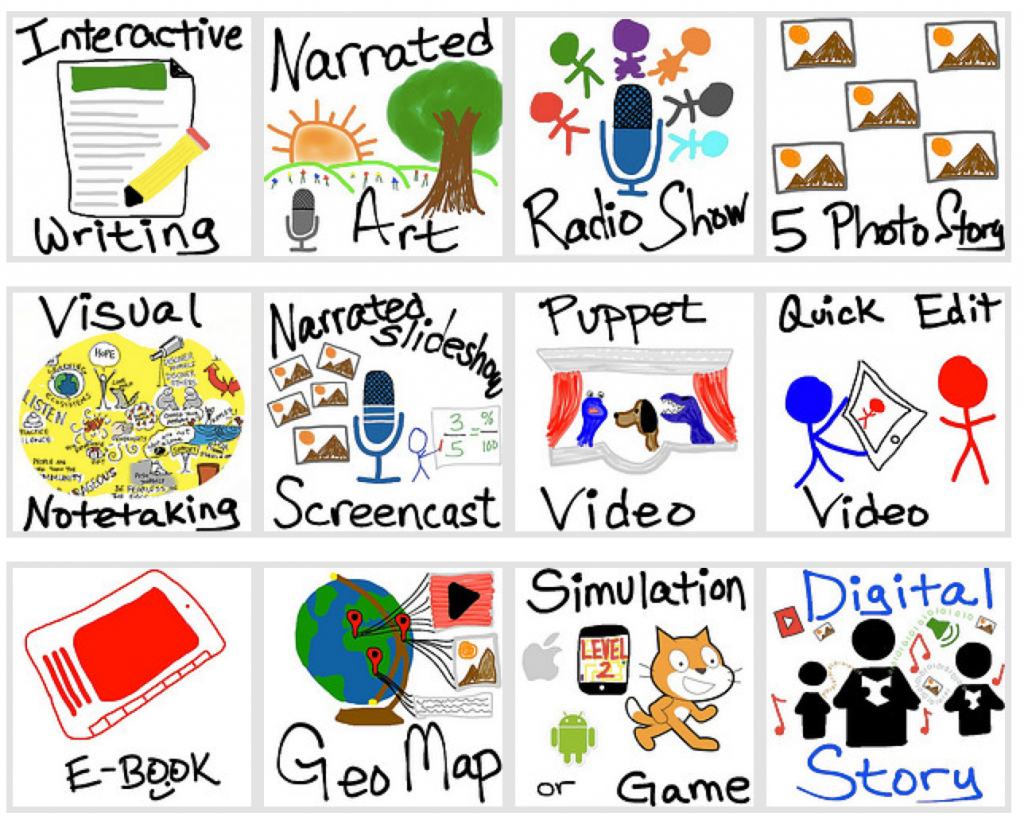Learn and Assess with ALL senses
A friend recently shared this concept of using all senses in a different context, but it just clicked for me to relate it to learning as well.
Having taught for 20 years, I have adapted my practice many times. When new ideas come into pedagogy, it encourages a state of reflection. Part of the reflection can make salient the practices that you already naturally are doing but now have a name to identify them with. It also can highlight the I can’t believe I used to do ….
Changes in Curriculum, Reporting, and Assessment recently have encouraged much reflection over the last couple of years. A question that I keep asking participants of workshops is “When you ask a student to write a paragraph, what are you assessing?” If you want to understand a students thinking and students have to print, or worse require hand writing, what are you assessing? If the physical written output gets in the way of seeing their thinking, are you truly assessing the the thinking?
There are so many ways that students can share their learning, thoughts, ideas. I love the easy accessible features that iPads have brought into education. Now most tablets and phones have the features to record voice, record touch, record images, create images, create music.
Based on Arisotle’s idea of 5 senses, I would adapt the idea of using all your senses with
See – What picture is created physically, or invoked through their process and product?
Smell – What feelings or emotions are created? Does the work create a feeling through language or imagery of something like fresh baked soft and chewy white chocolate macadamia nut cookies as they come out of the oven?
Taste – What style is evident in their work? Did the ‘recipe’ produce the expected results.
Touch – What is the physical quality? Does it support or detract from the ideas? (Not can I read their writing.)
Hear – What words are their using? If they are using a voice, have they used inflection, conversation, meta-cognition
I know it is a stretch to Smell or Taste their work, but I still think it is useful as a reminder to see
Based on International Baccalaureate Theory of Knowledge(TOK) Ways of Knowing, I might think of the following questions for showing their ways of knowing.
language, – Do the words or media used accurately represent?
reason, – How has rationale or critical thinking made visible?
sense perception, – Have they awakened your senses? Can you see, smell, hear, feel what they are describing?
memory, Have they made connections to previous knowledge?
faith, Have you made personal connections to your bias, beliefs, and understanding?
intuition, Have you gone beyond the surface understanding? Can you see connections that aren’t obvious?
imagination, Is creativity evident? How have they been creative?
emotion. – How does the style of the artifact change its overall result?
It is also important that if you are assessing language style, that you don’t miss assessing style correctly even when it is embedded within a picture perfect work of media art. The goal of having multiple media methods available is to allow students a variety of ways to make their thinking visible so you can assess their thinking.
I recently found this website with 12 different suggestions for showing with media. Showwithmedia.com by Wes Fryer

I know it is a bit of a stretch to take the idea of using all our senses with assessemnt, but the learning process could easily involve all our senses. The challenge for us then is if they used all their senses to learn it, how can they use all their senses to show what they learned – or to make us aware of their learning?
With all the options to learn and make thinking visible, are we giving enough options for students to learn and show their learning? AND if we aren’t, then are we assessing correctly?